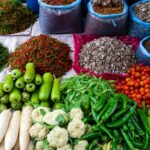Paella: A Delicious Journey Through Spain’s Iconic Rice Dish
Paella is more than just a dish—it’s a symbol of Spanish culinary tradition, culture, and hospitality. Originating from the Valencia region on Spain’s eastern coast, paella has captivated taste buds around the world with its vibrant colors, bold flavors, and rich history. In this blog post, we’ll take you on a delicious journey through Spain’s iconic rice dish, exploring its origins, variations, and culinary significance.
1. Origins of Paella:
Paella traces its roots back to the fields of Valencia, where farmers would prepare hearty rice dishes cooked over an open fire, incorporating local ingredients such as rice, vegetables, and meat or seafood. Over time, paella evolved into the iconic dish we know today, influenced by Moorish, Roman, and Mediterranean culinary traditions.
2. The Ingredients:
At the heart of paella lies rice—the star ingredient that absorbs the flavors of the accompanying ingredients and forms the foundation of the dish. Traditional paella recipes often feature a combination of meats such as chicken, rabbit, and snails, or seafood like shrimp, mussels, and squid. Additional ingredients may include vegetables like tomatoes, peppers, and peas, as well as aromatic herbs and spices such as saffron, paprika, and rosemary.
3. Regional Variations:
While the original paella recipe hails from Valencia, variations of the dish can be found throughout Spain, each with its own unique twist. For example, in Catalonia, you’ll find paella de marisco, a seafood paella made with a variety of fresh seafood and fish. In Andalusia, paella mixta combines both meat and seafood, reflecting the region’s diverse culinary influences.
4. Cooking Techniques:
The cooking process is as integral to paella as the ingredients themselves. Traditionally, paella is cooked in a wide, shallow pan called a paellera over an open flame, allowing the rice to develop a crispy, caramelized crust known as socarrat. This technique creates layers of flavor and texture, resulting in a dish that is both aromatic and satisfying.
5. Sharing and Celebration:
Paella is not just a meal—it’s a social occasion meant to be shared with family and friends. In Spain, paella is often enjoyed during festive gatherings, celebrations, and special occasions, bringing people together around the communal table to savor the flavors of tradition and camaraderie.
6. Culinary Symbolism:
Beyond its culinary appeal, paella holds symbolic significance in Spanish culture, representing hospitality, generosity, and the joys of communal dining. Whether enjoyed at a bustling street market in Valencia or a quaint seaside tavern in Barcelona, paella embodies the spirit of conviviality and connection that defines Spanish cuisine.
7. International Appeal:
In recent years, paella has gained popularity around the world, becoming a beloved staple on restaurant menus and home kitchens alike. Its vibrant colors, bold flavors, and versatile nature make it a favorite choice for gatherings, parties, and special occasions, transcending borders and bringing a taste of Spain to tables everywhere.
Paella is more than just a dish—it’s a culinary journey that celebrates the rich tapestry of Spanish culture, history, and tradition. From its humble origins in the fields of Valencia to its global popularity today, paella continues to captivate and delight food enthusiasts around the world with its vibrant flavors, communal spirit, and timeless appeal. So, the next time you sit down to enjoy a steaming plate of paella, savor not just the taste, but the story behind Spain’s iconic rice dish.






